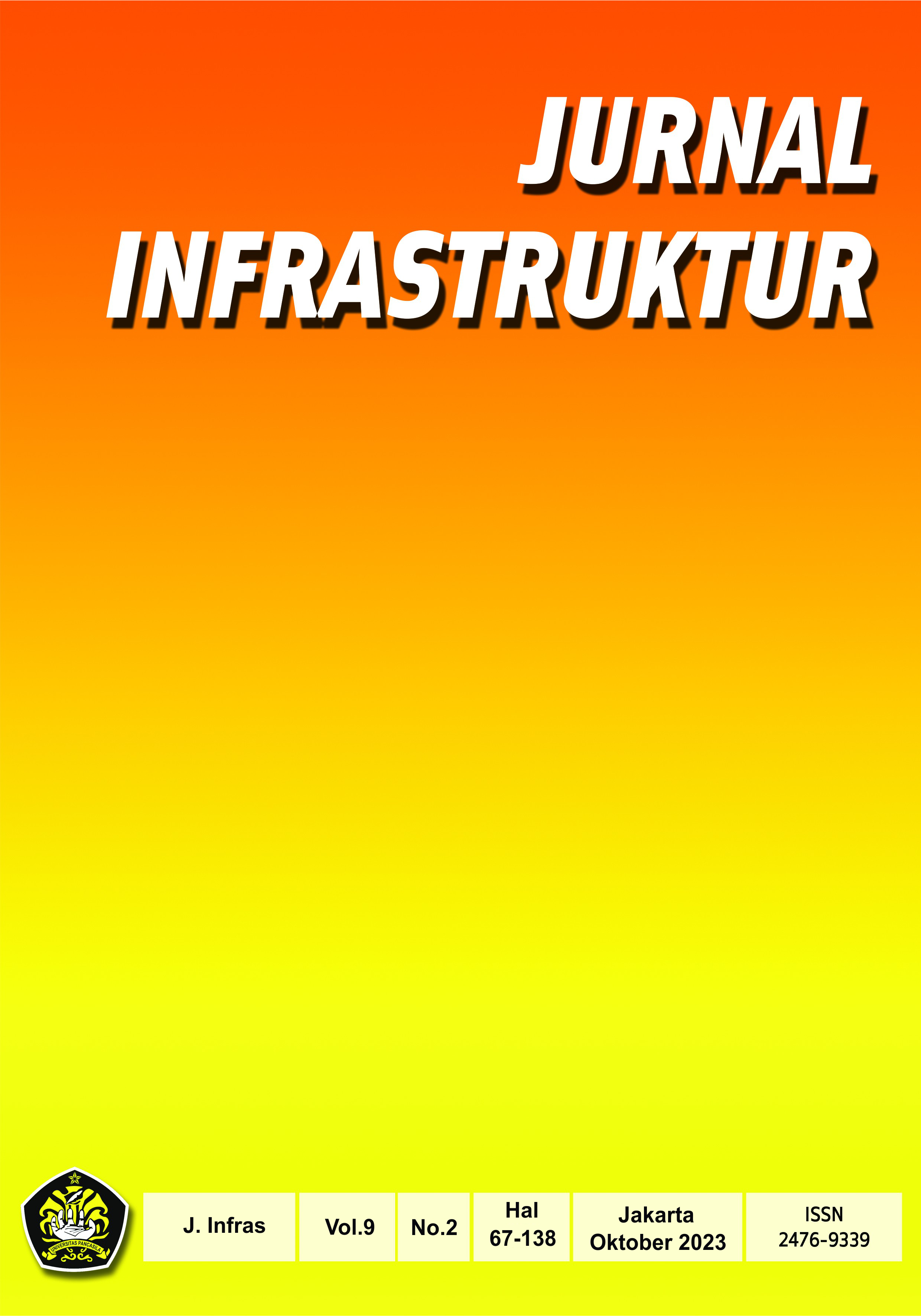CONSTRUCTION PROJECT CONTROL ANALYSIS USING EARNED VALUE MANAGEMENT, EARNED SCHEDULE MANAGEMENT, EARNED DURATION MANAGEMENT
Case Study: Highrise Building Project in Jakarta
DOI:
https://doi.org/10.35814/infrastruktur.v9i2.4943Keywords:
Construction Project;, Earned Value Mangement, Earned Schedule Management, Earned Duration Management, Project ControlAbstract
Appropriate control methods are needed to anticipate potential problems and make construction projects better managed to improve efficiency, productivity, and quality of work. Earned Value Management (EVM) experienced problems in predicting duration because it used two scopes, namely cost and schedule. Then there is Earned Schedule Management (ESM) which monitors project performance through project schedules, but in its application ESM still uses variable costs for its indicators. To make up for the shortcomings of EVM and ESM, another method was developed by Khamooshi and Golafshani, namely Earned Duration Management (EDM) a method for measuring or estimating duration by separating the dimensions of schedule and cost. The purpose of this study is to determine the inaccuracies of the control methods of EVM and ESM in estimating EAC (Estimated At Completion) so that it requires EDM to estimate it. In this research, data collection was carried out in weeks 32 to 59. The data collected in the field was actual project work progress data, actual project financial data, and master plan data. The analysis of Schedule Varian (SV) and Schedule Varian time SV(t) variants shows negative values that result in an estimate of the final duration of the project that is late from the plan inversely proportional to dv which is positive value, meaning that the project is in accordance with the plan. Then the Schedule Performance Index (SPI) and Schedule Performance Index time SPI(t) show a value that is less than one which indicates the project is slower than scheduled, in contrast to the DPI it produces a value equal to one which means the project is in accordance with the plan. The EDM method generates an accurate trend in providing an assessment of the performance of project execution time compared to EVM and ESM. The contribution from research results comparing 3 methods shows that the EVM method produces anomalies in schedule control analysis, so that these deficiencies can be directed towards using the ESM method. while the EDM method, which is less familiar, is more appropriate for use in certain construction cases such as analysis of determining the amount of a claim.
References
L. Sarjos, “Forecasting Project Performance – Testing Earned Value Management And Earned Schedule Metrics Using Real Life Project Data,” 2021.
A Guide To The Project Management Body Of Knowledge (Pmbok Guide), 6th Ed. Newton Square: Pa: Project Management Institute, 2017.
N. U. R. F. P. Arifiani, “Analisis Kinerja Proyek Dengan Menggunakan Metode Earned Value,” J. Online Mhs. Bid. Tek. Sipil, Vol. 1, No. 1, 2020.
A. A. G. A. Yana, A. A. D. P. Dewi, And Y. K. K. Harefa, “Faktor-Faktor Yang Mempengaruhi Kinerja Proyek Dalam Pelak Sanaan Proyek Konstruksi Gedung (Studi Kasus: Proyek Pemerintah Kabupaten Badung),” J. Spektran, Vol. 8, No. 2, P. 215, 2020.
G. C. Miglaccio And L. Holm, Introduction To Construction Project Engineering. 2018.
A. E. Pertiwi, “Evaluasi Pengendalian Waktu Pada Proyek Pembangunan Gedung Rawat Inap 3 Dan 4 Rsud Suradadi Menggunakan Earned Value Concept (The Evaluation Of Time Control On The Development Project Of Inpatient Building 3 And 4 In Hospital Suradadi Using Earned Value C,” 2018.
M. J. Arabpour And O. Moselhi, “International Journal Of Construction Management Issn: (Print) ( Forecasting Project Duration Using Risk-Basedearned Duration Management Forecasting Project Duration Using Risk-Based Earned Duration Management,” Int. J. Constr. Manag., 2020, Doi: 10.1080/15623599.2020.1840272.
E. Mareels And J. Martens, Earned Duration Management Evaluation And Extension Of A Novel Project Control Technique For The Time Dimension. 2021.
P. A. De Andrade, A. Martens, And M. Vanhoucke, “Using Real Project Schedule Data To Compare Earned Schedule And Earned Duration Management Project Time Forecasting Capabilities,” Autom. Constr., Vol. 99, Pp. 68–78, 2019, Doi: Https://Doi.Org/10.1016/J.Autcon.2018.11.030.
H. Khamooshi And A. Abdi, “Project Duration Forecasting Using Earned Duration Management With Exponential Smoothing Techniques,” J. Manag. Eng., Vol. 33, P. 4016032, 2016, Doi: 10.1061/(Asce)Me.1943-5479.0000475.
R. Votto, L. Ho, And F. Berssaneti, “Applying And Assessing Performance Of Earned Duration Management Control Charts For Epc Project Duration Monitoring,” J. Constr. Eng. Manag., Vol. 146, P. 4020001, 2020, Doi: 10.1061/(Asce)Co.1943-7862.0001765.














